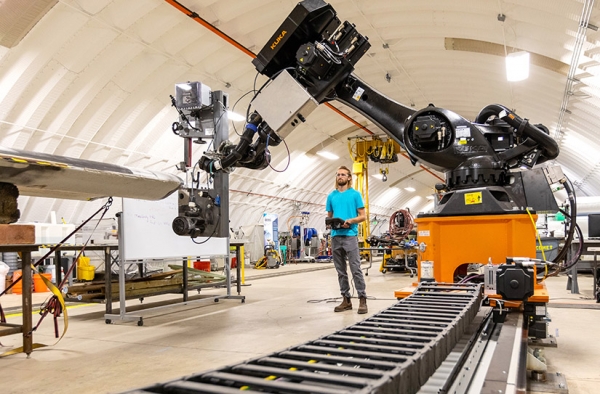Researchers at the U.S. Department of Energy’s National Renewable Energy Laboratory (NREL) have successfully leveraged robotic assistance in the manufacture of wind turbine blades, allowing for the elimination of difficult working conditions for humans and the potential to improve the consistency of the product.
Researchers at the U.S. Department of Energy’s National Renewable Energy Laboratory (NREL) have successfully leveraged robotic assistance in the manufacture of wind turbine blades, allowing for the elimination of difficult working conditions for humans and the potential to improve the consistency of the product.
Although robots have been used by the wind energy industry to paint and polish blades, automation has not been widely adopted. Research at the laboratory demonstrates the ability of a robot to trim, grind, and sand blades. Those necessary steps occur after the two sides of the blade are made using a mold and then bonded together.
“I would consider it a success,” said Hunter Huth, a robotics engineer at NREL and lead author of a newly published paper detailing the work. “Not everything operated as well as we wanted it to, but we learned all the lessons we think we need to make it meet or exceed our expectations.”
The paper, “Toolpath Generation for Automated Wind Turbine Blade Finishing Operations,” appears in the journal Wind Energy. The coauthors, all from NREL, are Casey Nichols, Scott Lambert, Petr Sindler, Derek Berry, David Barnes, Ryan Beach, and David Snowberg.
Read more at DOE/National Renewable Energy Laboratory
Image: NREL researcher Hunter Huth stands beneath a robotic arm designed to automate a portion of the blade manufacturing process. (Photo by Werner Slocum, NREL)




